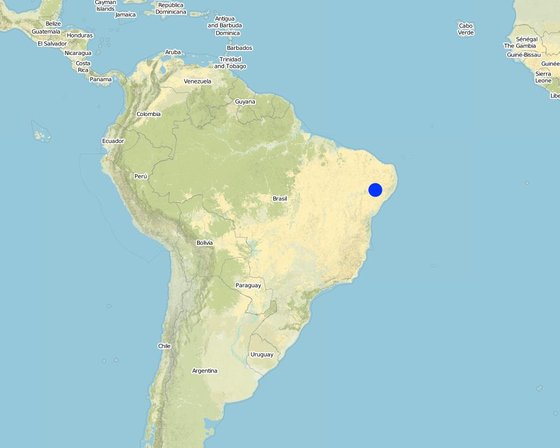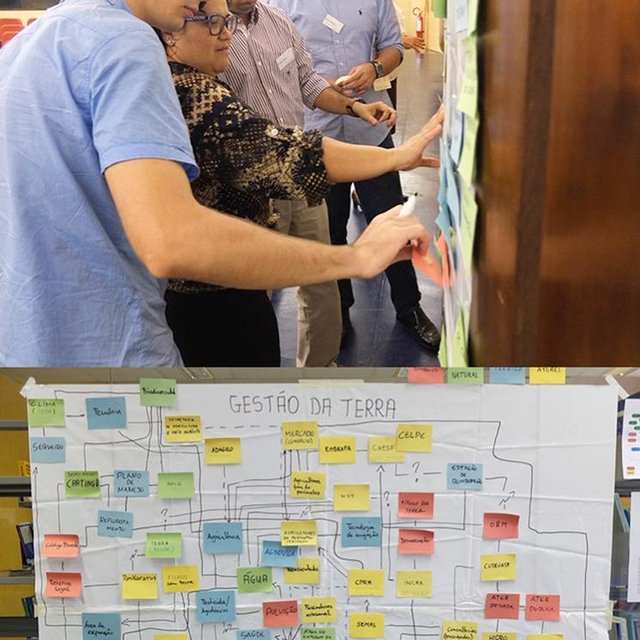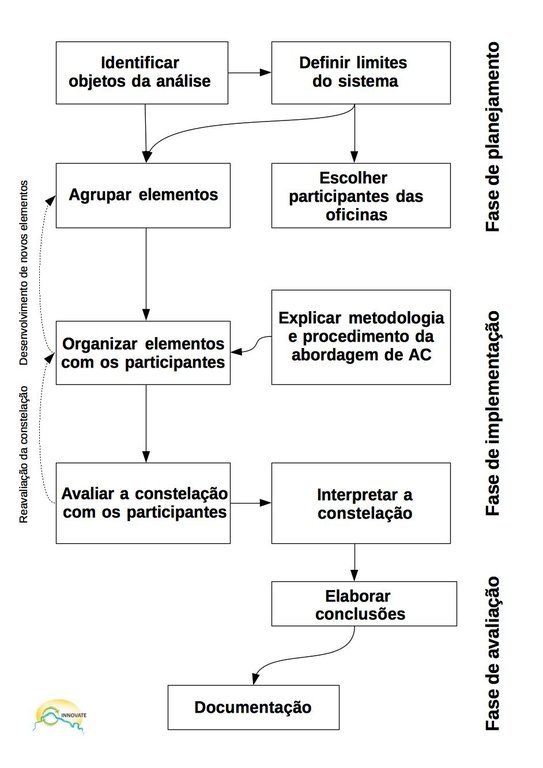



The Constellation Analysis method (CA) aims at a transparent, mutually accepted visualization of factors (‘elements’) that are systematically arranged under the method's four categories: actors; rules and concepts; natural elements; technical elements, with the type of their inter-relationships. The process enables consensus to be found between divergent positions, paving the way for better informed decision-making while facilitating a negotiated process of land management with potential changes/techniques.
During brainstorming and/or literature-based approach, different elements are determined and arranged visually on a board. Element categories are actors (e.g. farmers, energy supply company), rules and concepts (e.g. legal framework, plans and programs, regulations), natural factors (e.g. climate, vegetation, water) and technical factors (e.g. fertilizer, wastewater treatment, hydropower plant). Usually this is done by using differently coloured and shaped cards to help articulate ideas within a working group. Then, connections among and between the elements are discussed and the form of these interrelations are visualized as being (a) directed, (b) conflictive, (c) non-existent, (d) contradictory, (e) reluctant or (f) interactive. Through this approach the way towards developing solutions (or follow-up CAs) is guided.
The approach was applied at different scales and with different stakeholders with divergent professional expertise and educational levels, e.g. farmers, fishermen, employees of the government, representatives of indigenous tribes, associations, trade unions, and researchers. People found the methodology promising as it raises awareness and organizes information. Training in the methodology has been carried out amongst interested people at two universities, but not yet local development agents.
The visualization is carried out through an iterative group process. A moderator is needed to initiate the process by inviting the different stakeholders to a conducive location, and to facilitate the process. Exchange among participants is enhanced, and this leads to better understanding of different viewpoints in situations of tension or in the understanding of what has evolved through specific developments in the past. During a second analytical step, the main lessons of the visualization are extracted and documented. Here, missing factors/relationships, and consequently the need for action, are detected. For example, insufficient communication between actors could be uncovered, or it may be detected that planning programs need to be improved.

Lugar: Itaparica Reservoir, Petrolândia, Pernambuco, Brazil, Brasil
Dato de inicio: 2012
Año de conclusión: 2016
Tipo de Enfoque
| ¿Qué partes interesadas/ entidades implementadoras estuvieron involucradas en el Enfoque? | Especifique las partes interesadas | Describa los roles de las partes interesadas |
| usuarios locales de tierras/ comunidades locales | smallholders of local agricultural community | |
| especialistas MST/consejeros agrícolas | ||
| profesores/ niños en edad escolar/ estudiantes | students only in observing role | |
| gobierno nacional (planificadores, autoridades) |
Simplified flowchart of the Constellation Analysis Approach.
Planning phase:
Clarify the objective or question behind the analysis. Then, have an overview research about first elements (assembling elements), e.g. which actors can give interesting input and how to contact them. Preparing material for the workshop(s): coloured cards, pens, whiteboard, etc.
Implementation phase:
Explain the objective and methodology to participants, the meaning of the elements: actors; rules and concepts; natural elements; technical elements and their different relations. Clarify rules of respecting each other. Arrange the elements. Evaluate the constellation together with participants, e.g. why are elements far or close to each other? Why are relations conflictive and how to overcome? Are elements or relations missing? Is all information available? What are the next step? Can recommendations be formulated?
Evaluation phase:
Were participants objective enough? How to interpret participant’s activity within the workshop? Which actors should be asked as well? Consolidate participants’ statements with literature and research and document. Documentation could be a photo or digitalized picture of results with an explanation based on literature.

Las decisiones fueron tomadas por
La toma de decisiones se basa en
detecting knowledge gaps and clarifying positions of players, and role of natural, technical and regulatory elements from multi-angled viewpoints/perspectives as core of the CA-Approach.
No immediate impact, however CA-Approach could prospectively contribute to improved sustainable land management and in particular governance.
No immediate impact, however CA-Approach could prospectively contribute to an improved situation of socially and economically disadvantaged groups.
Interest from cooperating universities (UFPE-Universidade Federal de Pernambuco, IFPE-Instituto Federal de Pernambuco).
Attained knowledge on a complex, perhaps previously nontransparent system and established contacts support future decision making. In general CA is a flexible method that can be applied by any group, preferentially mixed stakeholder groups.